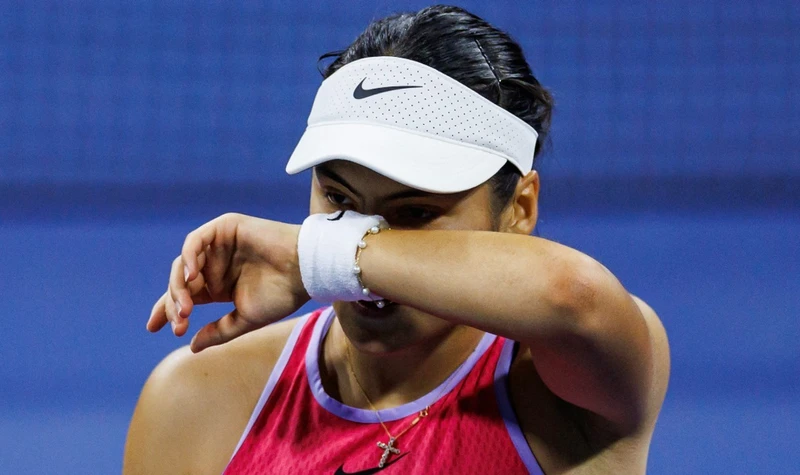A Bold Move in a Time of Crisis: Emma Raducanu Proposes New Approach to Managing Player Injuries
Emma Raducanu, the British tennis sensation who captivated the world with her 2021 US Open triumph, is now making headlines for an entirely different reason. In the midst of her ongoing battle with injuries, Raducanu has proposed a bold new approach to managing player health and well-being in professional tennis. After struggling with recurring physical setbacks, the 21-year-old is calling for a more comprehensive system to protect players from burnout and long-term damage caused by the rigorous demands of the sport.
A Player in Crisis
Since her remarkable rise to fame, Raducanu has been plagued by a series of injuries that have prevented her from maintaining consistency on the WTA Tour. From back problems to wrist injuries, her young career has been marked by several unfortunate withdrawals and missed opportunities. The physical toll has been overwhelming, and like many athletes, Raducanu has found herself repeatedly sidelined, struggling to regain her form.
Despite the frustrations of her injury setbacks, Raducanu has remained vocal about the need for a shift in the way tennis handles player health. In a recent interview, she acknowledged that the sport’s relentless calendar can often push players to the limit. “We train and play almost year-round with very little rest. The physical demands are immense, and I believe there needs to be a system that allows players to recover fully without feeling the pressure to return too quickly,” she said.
Raducanu’s Bold Proposal
In response to her own challenges, Raducanu is advocating for a change in how professional tennis addresses injuries and player workload. Her proposal centers around the introduction of a more flexible scheduling system, where injured players can have more time to rest and recover without the pressure of missing ranking points or losing sponsors. She suggests that the current structure, which rewards players for participating in as many tournaments as possible, often forces athletes to compete while injured or not fully recovered.
According to Raducanu’s vision, the WTA and ATP Tours would adopt a more personalized approach, allowing players to take medical breaks without penalty, giving them the time they need to rehabilitate properly. She has also called for a greater focus on mental health, pointing out that the stress of performing at a high level while dealing with injuries can have serious psychological effects.
In addition, Raducanu has proposed that tennis organizations invest more in player support systems, including better access to physiotherapists, sports psychologists, and other medical professionals who can provide comprehensive care to athletes. “There’s so much more we can do to help players avoid burnout and prevent long-term injuries,” she explained. “It’s not just about the physical, it’s about the mental and emotional toll as well.”

Support and Skepticism
Raducanu’s proposal has been met with mixed reactions from the tennis community. Many players, particularly younger ones who have faced similar challenges, have voiced their support. Rising stars such as Coco Gauff and Leylah Fernandez have echoed Raducanu’s concerns about the physical demands placed on young athletes and agree that a more thoughtful approach to player health is needed.
However, some traditionalists within the sport have expressed skepticism about her suggestions, arguing that tennis has always been a physically demanding sport and that players must adapt to the challenges. They fear that introducing more flexibility could lead to a lack of competition or reduced interest in tournaments, as top players might skip events too frequently.
Despite the differing opinions, Raducanu’s stance has sparked an important conversation about player welfare in tennis. As more athletes across various sports raise awareness about the physical and mental toll of professional competition, Raducanu’s proposal is seen by many as a step in the right direction.
Looking Ahead
While it remains to be seen whether the WTA or ATP will consider implementing any of Raducanu’s ideas, her bold stance on injury management has highlighted an issue that many players face in silence. The pressure to perform, combined with the risks of long-term injury, is a reality that few athletes openly discuss. By bringing attention to these challenges, Raducanu is not only advocating for herself but also for the future of the sport.
As she continues her own journey of recovery, Raducanu remains hopeful that change is possible. “I love this sport, and I want to be part of it for a long time,” she said. “But we need to make sure that players can have long, healthy careers without sacrificing their well-being.”
Conclusion
Emma Raducanu’s bold proposal to reform how injuries and player health are managed in tennis has sparked a much-needed conversation. As she continues to battle her own injury setbacks, her ideas reflect a broader concern about the physical and mental demands placed on professional athletes. Whether her vision will become a reality remains uncertain, but her courage in speaking out could pave the way for lasting change in the sport.



